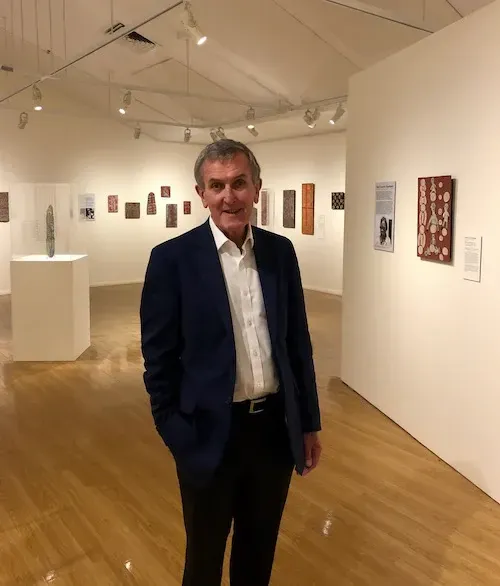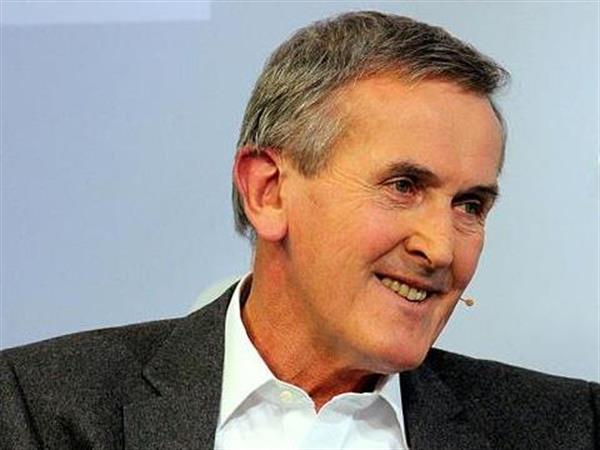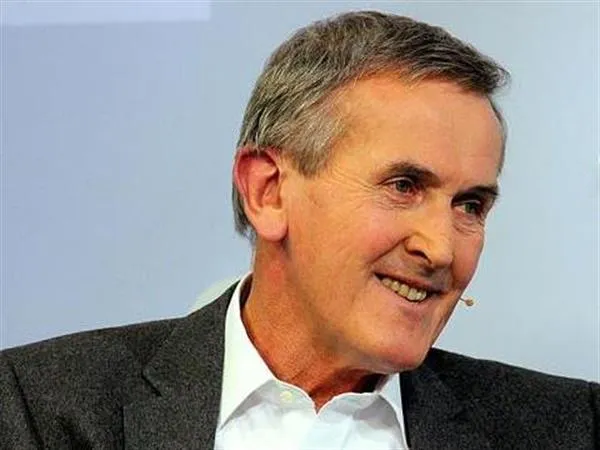Seven pillars of wisdom from Neil MacGregor
Written by

In 1999 Neil MacGregor refused a knighthood, making him the first director of London’s iconic National Gallery to do so.
Nearly a decade later, in 2008 he turned down a job as Director of the Metropolitan Museum of Art in New York because it didn’t offer free admission to the public.
Sense a trend? MacGregor has strong opinions, a sturdy ethical fibre and is the man that everyone wants for the job.
As a writer, celebrated BBC broadcaster and former Director of the National Gallery, the British Museum, and Founding Co-Director of the Humboldt Forum in Berlin, he is one of the most compelling communicators and visionary managers in the arts today.
There’s no doubting the passion and intellect of this Glaswegian, who was plucked from life as a lawyer to bring history and culture to the masses. So what will he teach us now?
Our greatest challenge
MacGregor believes that the biggest questions museums face today 'are about the stories they tell, and who tells them'.
‘There is no one history. The challenge is to ensure that different stories are told about the same object. We live in a world of identity politics, and politicians want simple stories. Top of the museum’s list is to remind everyone that the story is always complex, and there is no such thing as a single identity. Museums are very good at showing that all identities are multiple.’
Building booms and transition
Globally, the culture sector is facing a building boom. MacGregor has experienced his share of redevelopments, and controversies that come with them. As Director of the National Gallery he oversaw a refurbishment of existing galleries, plus the development of the $US60 million extension of The Sainsbury Wing, which was accused of “facadism”.
He was further charged with the Herculean task of co-shaping the vision of Humboldt Forum - a € 595 million euros building project scheduled to open later this year, which unifies five independent institutions under its umbrella.
His advice on maintaining balance while in the belly of the building beast, rests in the language.
‘The building project is the great opportunity to explain to everybody why you exist … it forces you to clarify what you are for, and above all who you are for,’ MacGregor said.
‘A great building project will insist this is being made for everybody. It is a great opportunity to redefine the purpose of the place,’ so use it well.
‘We usually begin on the building before we answer those questions. Institutions need to ask them at regular intervals.'
Becoming a household name
MacGregor says the first thing you must understand is how you make your museum a place that belongs to the citizens: ‘How do you make the citizens realise this is not a public collection, but the private collection of every citizen?’
His philosophy is that you start by making it free. One of MacGregor's proposals was to make the Humboldt admission-free, based on the model of the British Museum, but sadly that has not happened.
‘I believe strongly, that fundamentally to be accessible you have to make it free,’ he said.
MacGregor believes that people should feel comfortable adopting museums in the same way that they feel a sense of ownership with public parks.
‘Whether you have a tourist visitor contingent, the key audience is always local, and the key question is always, how do you make them know it is theirs? It is about language first, and then it is about programming.’
Repatriation
MacGegor has long been at the coalface of the thorny question of repatriation of cultural objects and artefacts, a question that is very pertinent to museums.
As Director of the British Museum, MacGregor followed the same line as previous directors in arguing against returning the Elgin Marbles, the iconic sculptures collected from the Parthenon. At the time, he stated that it is the British Museum's duty to ‘preserve the universality of the marbles, and to protect them from being appropriated as a nationalistic political symbol.’
MacGregor told us: ‘Every case has to be looked at individually – the circumstances of the transfer, movement and acquisition of objects are so different. It brings you back to the key question: what are collections for? Who are they for? We all part of each other’s story.’
He continued: ‘My main response at the moment would be that it is an extremely important question, and a difficult one under our current legal systems. The debate is very polarised around legal ownership. Legal questions are always slow – and they ought to be slow to get them right – but in the meantime we can do a great deal.
‘What we can do at once is to start lending, and we will be able to make a lot of progress quickly if we talk about sharing, and lending, and travelling objects while we work out the legalities of ownership,’ he added.
Staying nimble
MacGregor’s advice on staying nimble and responsive is simple. ‘The key question is why does this collection matter today, and how does it allow the citizen to understand the world better? That is where your public program comes in, because museums can conduct debates pertinent to our times that are very hard to do in any other space.’
He believes that while museums have gravity, those conversations can be very responsive and reflective of a moment, and this is our greatest currency for engagement.

Popularity and the media
MacGregor has a kind of evangelistic mission to open up collections to everyone. Part of that has been advocating for free museum admission, another tactic is digitising collections, while personally he has had great success through his award-winning BBC television and radio series, the first as early as 1995, the most recent earlier this year.
That was two decades before podcasts and vodcasts and MacGregor has become a strong advocate that reaching the masses through popular media. So we asked his read on the two words – accessibility and popularity – and what they mean to museums in our times.
‘I think popularity can’t really be managed and that’s a good thing! You can’t make yourself popular, especially with the rise of social media. Accessibility is something else altogether and has so many levels to it. A lot of work has been done in recent years about addressing physical access for everybody…and that is a great signal to give a community.
He continued: ‘What digital technology has done is free us from the [exhibition] label and that has changed everything … and now on your iPhone you can have many voices telling different stories, in different languages, about the same object.
‘Most museums have made huge strides in last 30 years and feel at ease with their accessibility, but they have to keep going on that; is important not to slow down,’ warned MacGegor.
Shouldering complacency and funding burn out
MacGregor was made director of the British Museum in 2002, at a time when that institution was £5 million in deficit. His advice?
‘That has been the case forever. The British Museum was founded in 1753, and has had funding problems ever since. It is part of being a museum, to having a funding problem!
‘The only answer is that you have to keep demonstrating to your citizens that you are worthwhile, and then they will fund you.’
By Gina Fairley - Originally published on Artshub.
